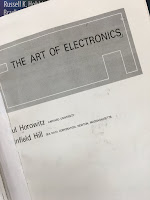Each atom contains a nucleus about 100,000 times smaller than the atom. The nuclear charge determines the number of electrons in the neutral atom and hence its chemical properties. The nuclear mass determines the mass of the atom. For a given nuclear charge there can be a number of nuclei with different masses or isotopes. If an isotope is unstable, it transforms into another nucleus through radioactive decay.In order to understand isotopes, consider the isotopes of carbon, one of the most important elements for life.
The most abundant isotope of carbon is 12C. This isotope is stable represents 99% of all carbon. The nucleus of 12C contains six protons (carbon’s atomic number is six) and six neutrons. The nucleus is basically three alpha particles stuck together.
A second stable isotope is 13C, which contains six protons and seven neutrons. Only about 1% of carbon is 13C. The ratio of 13C to 12C is used to study ancient climates and oceans. Plants preferentially take up 12C, so the 13C/12C ratio provides a way to determine the amount of photosynthesis production, and contains information about the origin of carbon dioxide emission (to learn more, click here)
All isotopes of carbon except 12C and 13C are unstable. The longest-lived unstable isotope is 14C, with a half-life of 5730 years. As with most isotopes containing an overabundance of neutrons, it decays by β- emission (a neutron turns into a proton, with the emission of an electron). In Chapter 16 of IPMB, we describe how the decay of 14C contributes to the background radiation.
We are continuously exposed to radiation from natural sources. These include cosmic radiation, which varies with altitude and latitude; rock, sand, brick, and concrete containing varying amounts of radioactive minerals; the naturally occurring radionuclides in our bodies such as 14C and 40K; and radioactive progeny from radon gas from the earth.A homework problem in Chapter 17 describes how 14C is used to determine the age of organic remains.
Problem 58 One way to determine the age of biological remains is “carbon-14 dating.” The common isotope of carbon is stable 12C. The rare isotope 14C decays with a half-life of 5,370 yr. 14C is constantly created in the atmosphere by cosmic rays. The equilibrium between production and decay results in about 1 of every 1012 atoms of carbon in the atmosphere being 14C, mostly as part of a CO2 molecule. As long as the organism is alive, the ratio of 12C to 14C in the body is the same as in the atmosphere. Once the organism dies, it no longer incorporates 14C from the atmosphere, and the number of 14C nuclei begins to decrease. Suppose the remains of an organism have one 14C for every 1013 12C nuclei. How long has it been since the organism died?
15C
11C
If a positron emitter is used as the radionuclide, the positron comes to rest and annihilates an electron, emitting two annihilation photons back to back. In positron emission tomography (PET) these are detected in coincidence. This simplifies the attenuation correction, because the total attenuation for both photons is the same for all points of emission along each γ ray through the body (see Problem 54). Positron emitters are short-lived, and it is necessary to have a cyclotron for producing them in or near the hospital.Many PET applications use 11C-acetate or 11C-choline, which is administered to the patient. Imaging where the 11C decays provides information about where carbon uptake occurs.
10C
By discussing the isotopes of carbon, we survey many of the most important ideas of nuclear physics, particularly those relevant to nuclear medicine.









